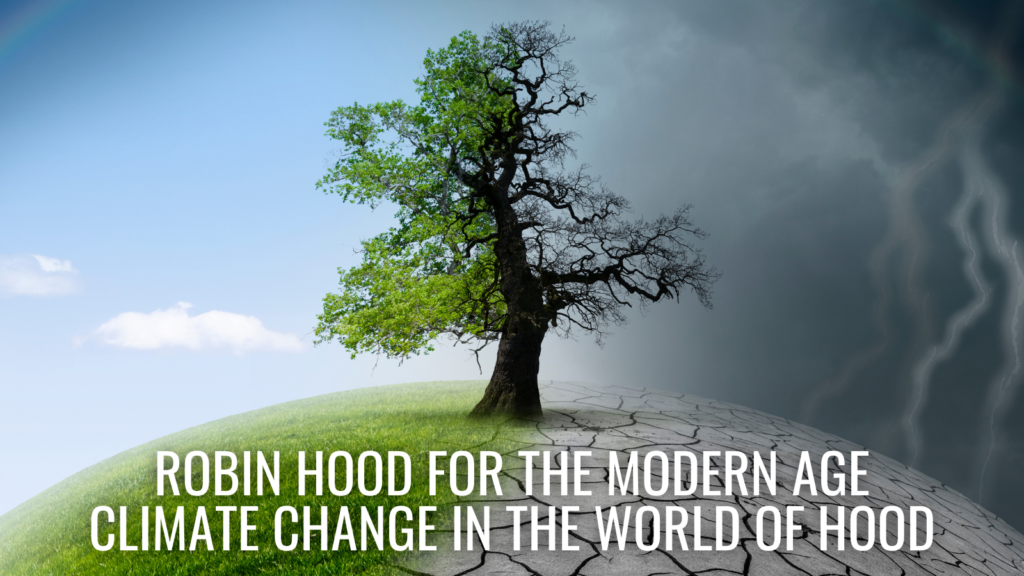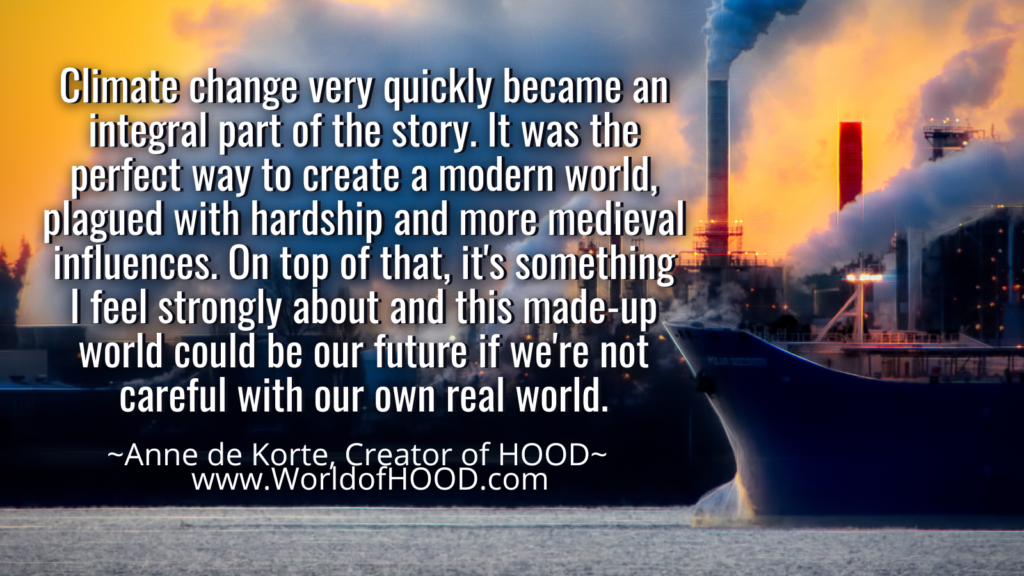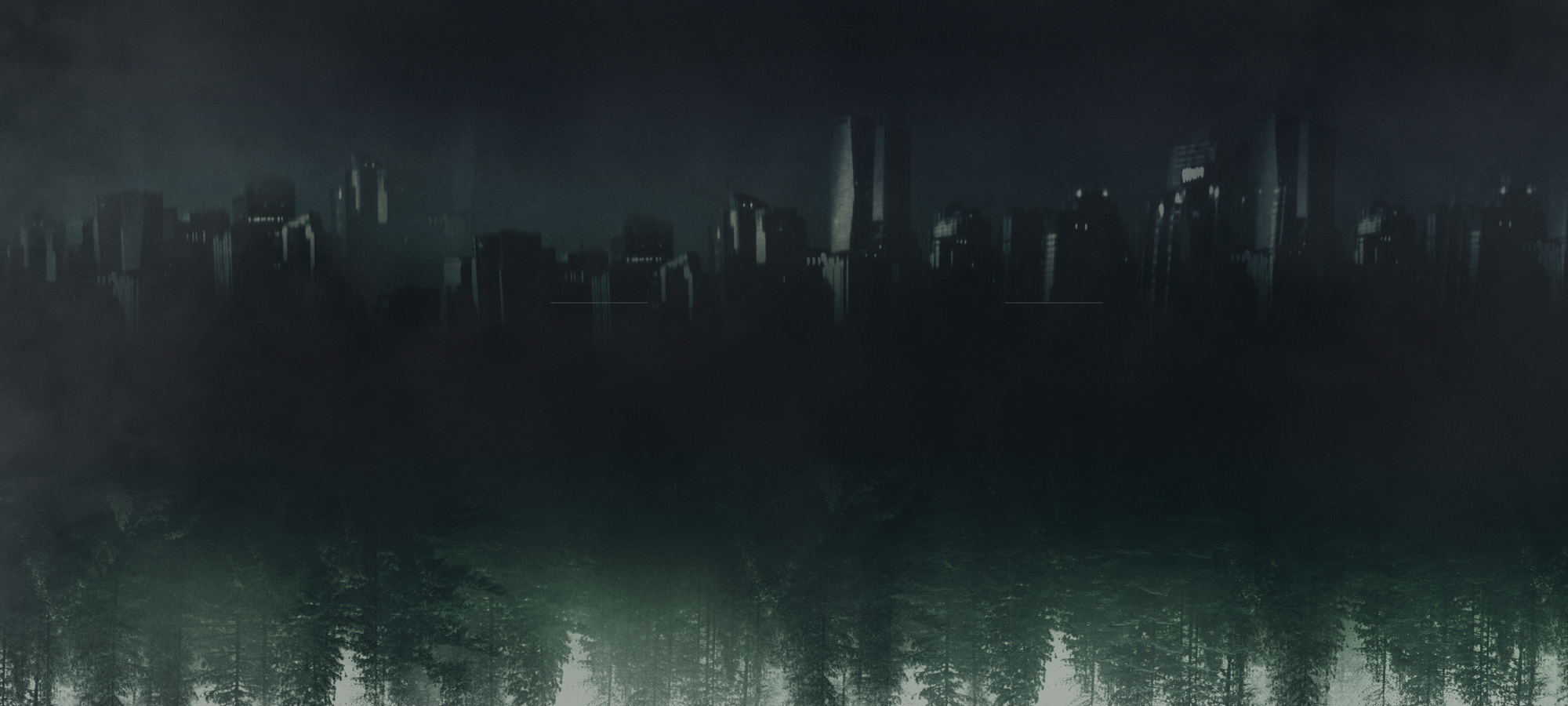By Alison Weaverdyck
Welcome back to the final installment of our Robin Hood for the Modern Age series. Missed the previous posts? It’s not to late to read them all.
While most Robin Hood adaptations are set in the same era as the original ballads, HOOD is set in an alternative present. Everything changed back in the 1100s when magic tipped the scales in favour of Empress Matilda against her cousin, Stephen of Blois. And though this shift ushered in some very good changes for European society as a whole, there were also devastating consequences.
“The Change”
Magic in the World of HOOD is rooted in science and the manipulation of atoms. So while there are some recognizable staples from other magic systems, such as being able to control fire, the mechanism for it is limited by the bounds of physics. Though this may seem limiting at first glance, it also means that our magic can have practical applications in the advancement of technology.
This resulted in an accelerated development and spread of technology in the story world equivalent to about 100 faster than in the real world. So by the 1890s, the story world looked a lot like the 1990s, the era when the dangers of climate change really started to become clear in real life. Over the following decades, the climate rapidly warmed, resulting in The Great Torrent, a global flooding event that altered coastlines around the globe. One place that was affected the most was the Anglia Isle (AKA England).

Nottingham and Outlaws in the World of HOOD
As a result, the Nottingham of HOOD is on the seafront. The surrounding countryside of East Mercia was flooded with seawater, which has cut down on their ability to grow enough food. This is where HOOD connects back to the Robin Hood legend. The poor citizens of East Mercia are starving and isolated from the glitterati of the “Inner Circle” who live in luxury, much like the divide between peasants and lords in history.
When Robyn Loxley returns from the Promised Land, a rebellion is brewing in the wake of the harsh policies declared by King John and enforced by her sister, the Sheriff of Nottingham. The rebels (labeled terrorists by the powers that be) steal food and other supplies to support their population in Greenwood. They also set off bombs in government facilities in protest of the regime, but are also careful to keep casualties to a minimum. Though if you watch to Nottingham News, you get a very different story…
Will Scarlett, classically Robin of Loxley’s righthand man, is the leader of the rebels. But unlike the “merry men” of the ballads, Will has no love for Robyn. She comes from the same wealth and privilege that the Inner Circle enjoys, and he doesn’t trust that she’ll actually help their cause. He and his fellow rebels use what limited technology they can scrounge to send out their own Outlaw Radio broadcasts to get the real story to the people.
Why Incorporate Climate Change into the Robin Hood Story?

In the early days of writing HOOD, things were very different. Changing Robin to Robyn and setting it in the present was always there, but Anne soon found that the Robin Hood story needs a certain set of circumstances. There has to be an opposing side that has absolute power, which is difficult to do convincingly in a contemporary story – unless there was a drastic change to the circumstances of today. Introducing advanced climate change was the perfect vehicle for portraying a modern world that had the trappings of days on gone.
Sound Off
What are things you’re doing in your everyday life to combat climate change? Did you know that Quivalon’s long-term goal is to donate 10% of profits to organizations fighting climate change and raising awareness? Got any recommendations about who we should donate to in the future? Leave us a comment!

